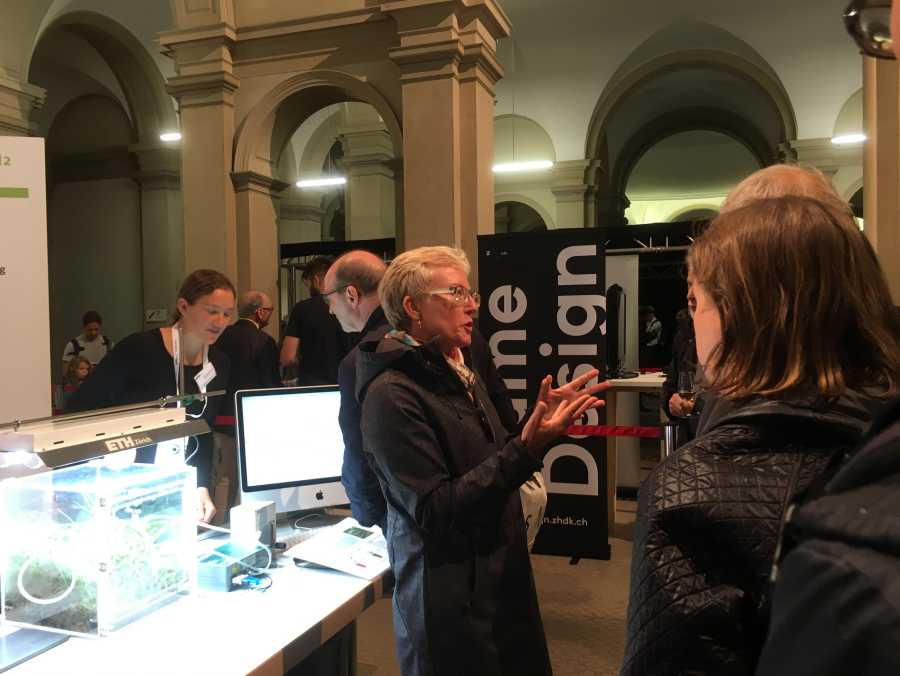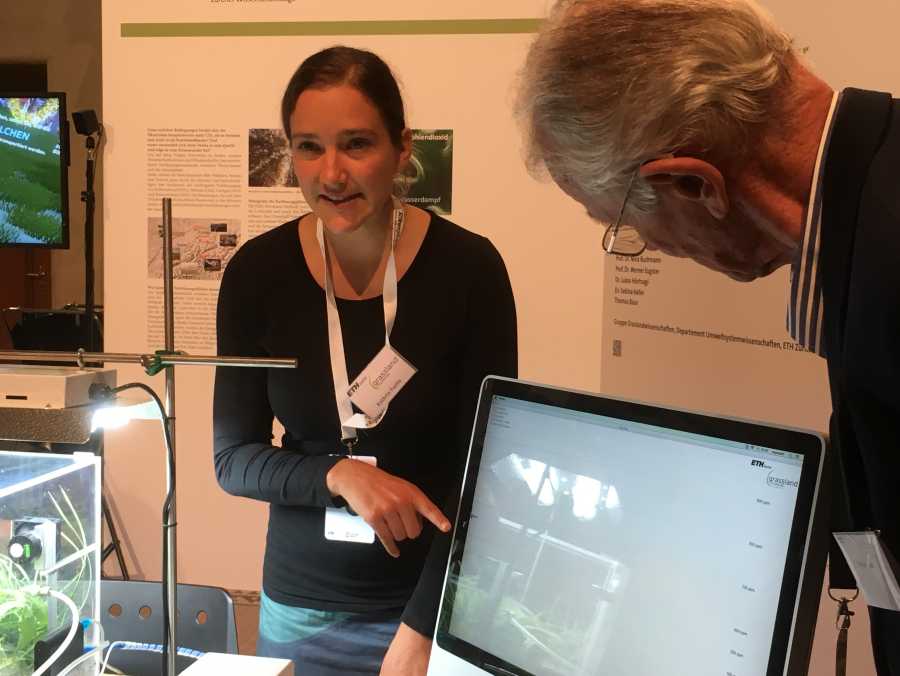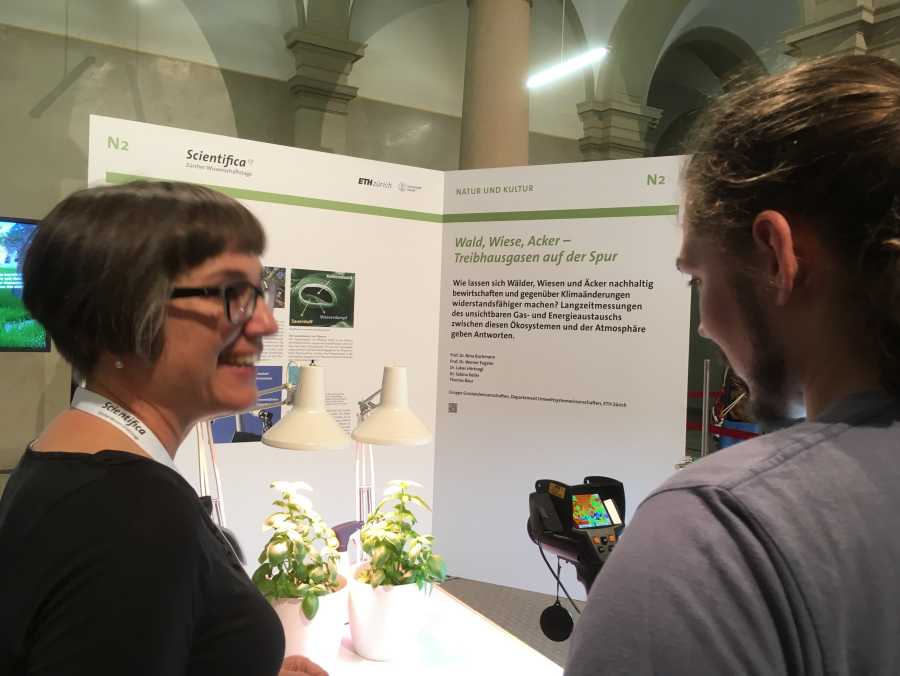Huge interest in the world of data
- Institut für Terrestrische Ökosysteme
- D-USYS
- Institut für Agrarwissenschaften
The fifth Scientifica 2017 from 1 to 3 September also showed research projects from the Department of Environmental Systems Science (D-USYS). With a total of more than 30,000 visitors, the ETH Zurich and the University of Zurich were awarded with a great audience.
After the opening of the Scientifica on Friday evening, Prof. Nina Buchmann (left in the picture, below), professor for grassland sciences and head of department at D-USYS gave a guided tour for invited guests.
With live measurements on a piece of meadow, the doctoral student Kathrin Fuchs (in the middle) showed impressively how the carbon dioxide exchange differs by day from the process at night. Sabina Keller (on the right) showed the evaporation of plants with a thermal imaging camera.
Virtual Reality flight to Davos
Under which conditions does an ecosystem bind more carbon than it releases and thus acts as a carbon sink? And when does this sink turn into a source and contribute to climate change? At the stand of the research group for Grassland Sciences, visitors were informed about the latest measurements from the past 20 years in the Seehornwald Davos. A virtual animation of the gas and energy exchange between ecosystems and the atmosphere was shown. It was thus possible to fly to the 40-meter-high observation tower and to observe the storage and release of CO₂ particles.
The atmosphere is full of invisible particles that are transported with the wind. They are in constant interaction with the biosphere. For example, CO₂ is an invisible gas and an important component of the atmosphere. For this roughly 3-minute tour the CO₂ was made visible and the visitors see, among other things, how the CO₂ particles in the air (blue-turquoise) are turbulently transported with the wind.
Offers of the D-USYS at the Scientifica

In the tent on the Polyterrasse, the team of forest ecosystem research and dendrochronology showed which information can be read from the annual rings of trees. A look back in time until 30,000 years ago - and some cautious statements about the future? Visitors could also take drill cores from trees and test various measuring devices.
external page Vermessene Wälder (in German)

Data-based methods are important for the production, trade and distribution of food. They help consumers to buy more sustainable and climate friendly. At the stand from the World Food System Center and crop plant science, visitors learned more about the influence of «big data» in our food value chains.
external page Nachhaltige Ernährung mit Bits und Bytes (in German)

At the stand of the Grassland Sciences group, you could walk on a virtual 3-D-tour to the measuring station in the mountain landscape of Davos and experience the otherwise invisible gas exchange between the mountain forest and the atmosphere.
external page Wald, Wiese, Acker – den Treibhausgasen auf der Spur (in German)
Scientifica 2017: Was Daten verraten
- Huge interest in the world of data:
Media Release from 3 Sept, 2017 - external page Scientifica on Facebook
- external page Programme of Scientifica from 1 to 3 Sept, 2017


